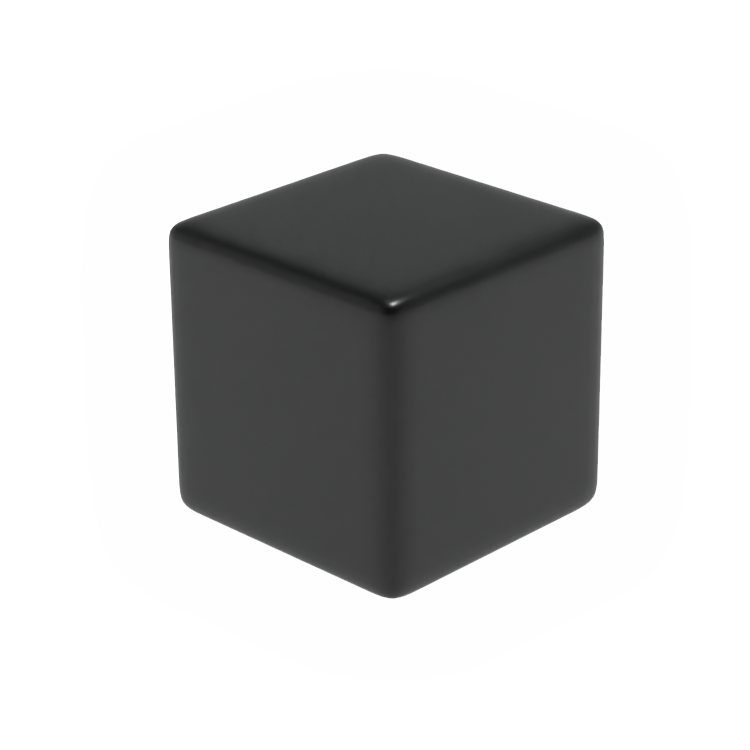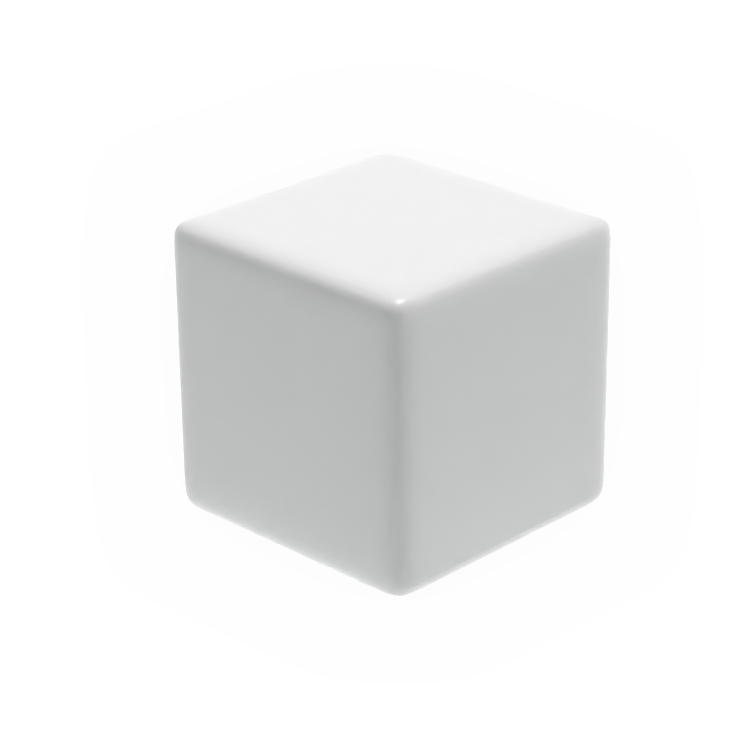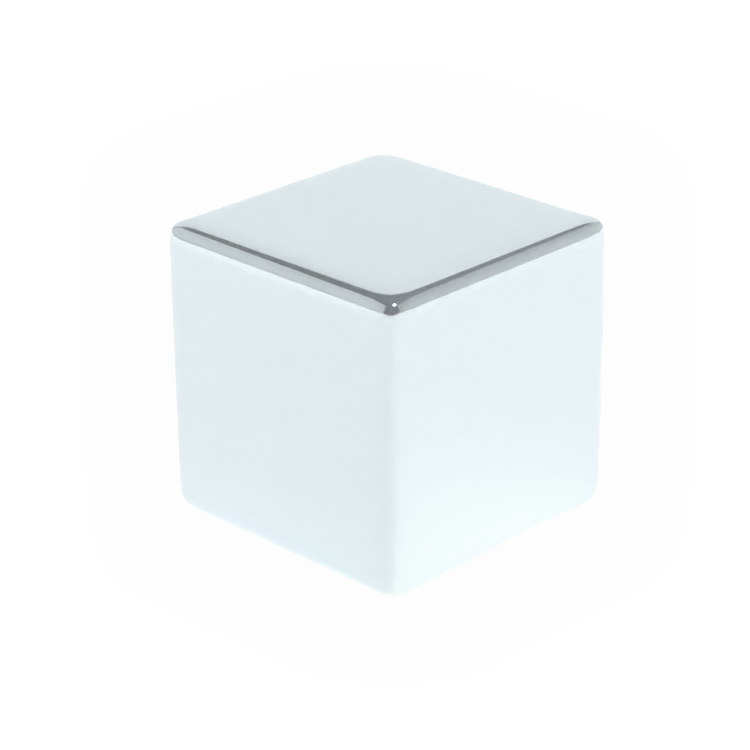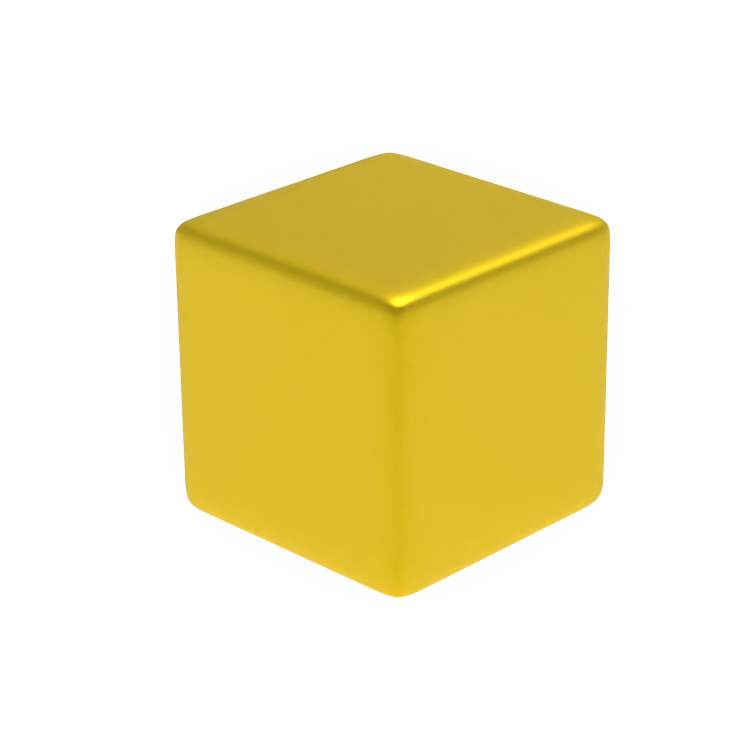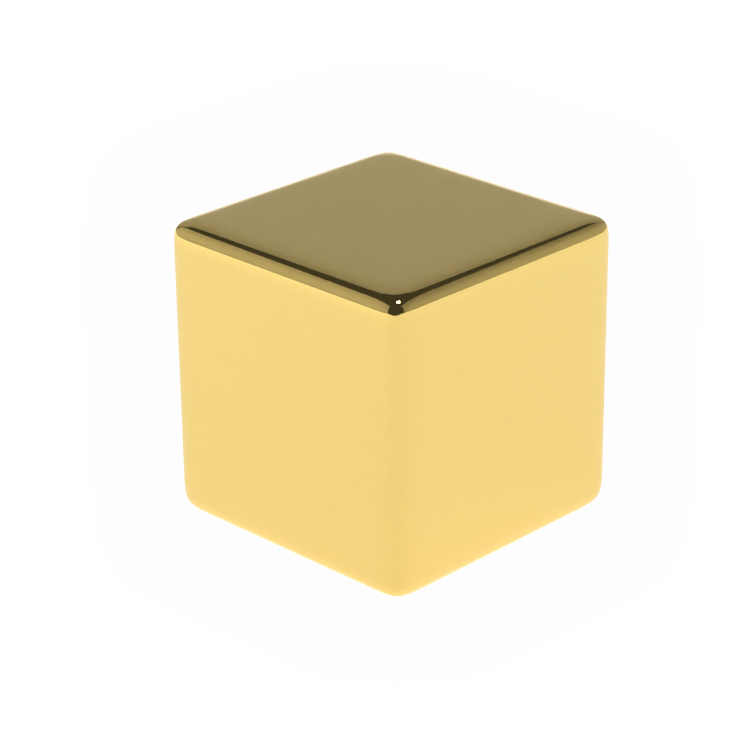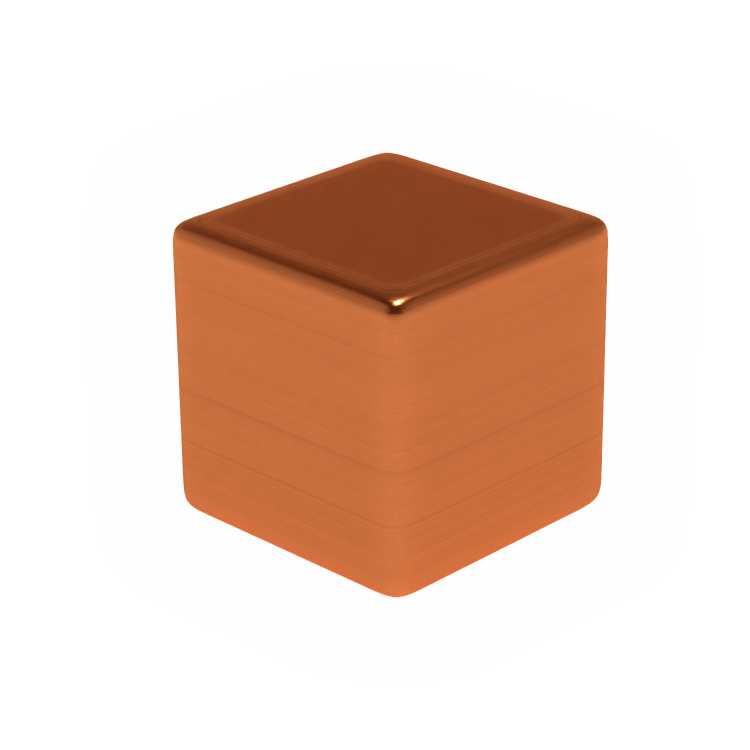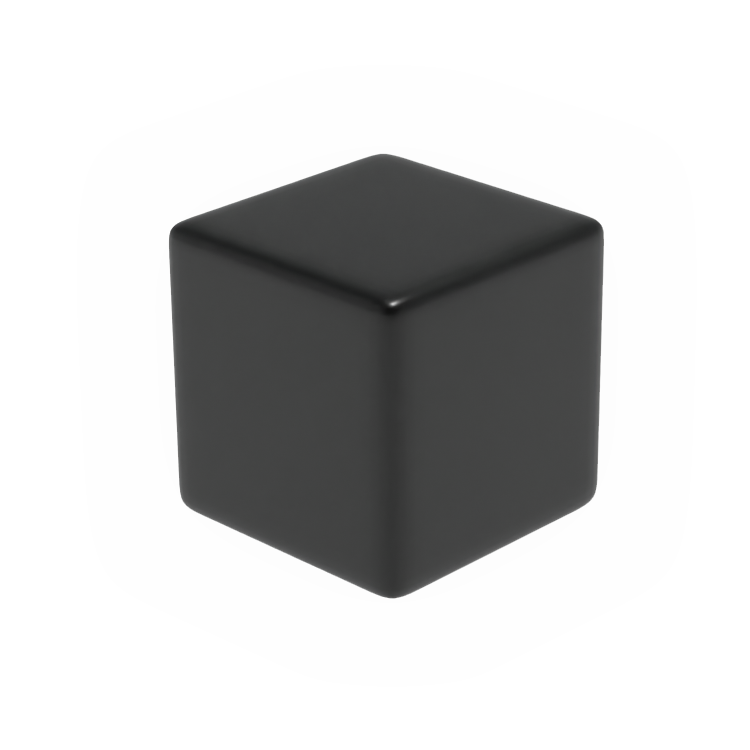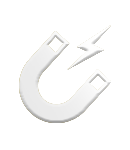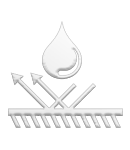Ultimate Guide to Coating Magnets
Learn all about the available coating and magnet protection below.
Introduction to Magnet Coatings
Coatings are mostly applied to magnets to provide protection against corrosion. Not all types of magnets require coating as some magnetic materials do not easily corrode.
Coatings are not just applied for their ability to fight corrosion too. In some cases, they’re applied to offer more kinetic durability, reflectivity and conductivity of the magnet. Some are even applied for their ability to fight bacteria.
In any case, if you need a magnet that is prone to corroding, choosing the coating is an important but straight forward step to having a magnet that works perfectly for your intended use.
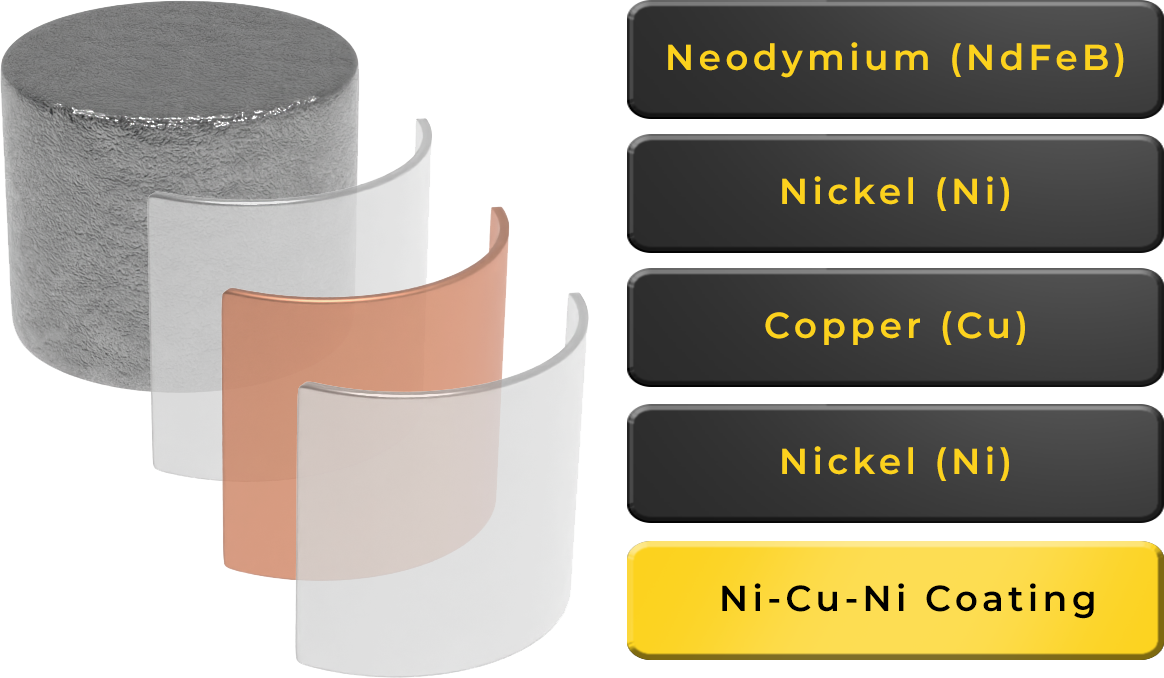
Which Magnets Need Coating? (✔️)
✔️ Neodymium Magnets
The rare earth material neodymium (NdFeB) is very prone to corrosion when in contact with humid or wet environments so in most cases, coating the magnet is an absolute must. The only case where this doesn’t apply is where the magnet is used in a vacuum or environment that does not have any moisture.
The most commonly used coating for Neodymium magnets is Ni-Cu-Ni, which is a triple layer of nickel, copper and nickel. This creates an excellent barrier and helps protect the magnet from corrosion. It’s important noting that piercing, drilling and cutting the magnet will expose the neodymium and corrosion is likely to occur.
✔️/❌ Samarium Cobalt (Sm2Co17) Magnets
It’s important to note that Sm2Co17 magnets mostly do not need to be coated, however, they contain samarium (Sm) , cobalt (Co), iron (Fe) and zirconium (Zr). The iron content of this grade of samarium cobalt make it slightly prone to corrosion.
If you expect these magnets to be exposed to humidity or an acidic environment, it may be worth considering Sm1Co5 grades or coating the magnet. The most common coating for Sm2Co17 to prevent corrosion from humidity is nickel. The melting point of nickel is very high which means it works well in hot environments.
Which Magnets Do Not Need Coating? (❌)
❌ Samarium Cobalt Magnets
If you’ve read our guide on Samarium cobalt magnets, you’ll know there are two different types of the magnet – Sm1Co5 and Sm2Co17.
Sm1Co5 magnets are the original samarium cobalt magnets which were first produced in the 1960s and contain no iron. This means there is no possibility of Sm1Co5 magnets corroding in wet or humid environments. This is why a coating for this magnet is not usually necessary.
❌ Alnico Magnets
Alnico magnets are made from an alloy of aluminium, nickel and cobalt – none of these elements corrode in humid environments which means a coating is not usually required.
This may come as a surprise to some people because they’re often painted red, but this is simply because, when they haven’t been machined, their raw unadulterated appearance is a grainy dark grey texture. This is often considered unsightly by some, hence the paint.
❌ Ferrite / Ceramic Magnets
Ferrite magnet have excellent resistance to corrosion and rust which means a protective coating is not usually applied.
This characteristic of ferrite magnets make them ideal for use in wet, humid and outdoor environments. If the magnet is in harsh or acidic environments, a coating may be required but these conditions would be rare.
Which Coatings are Available?
There are many types of coatings available and each one has their own unique properties and uses for different applications.
Which Coatings are Available?
There are many types of coatings available and each one has their own unique properties and uses for different applications.
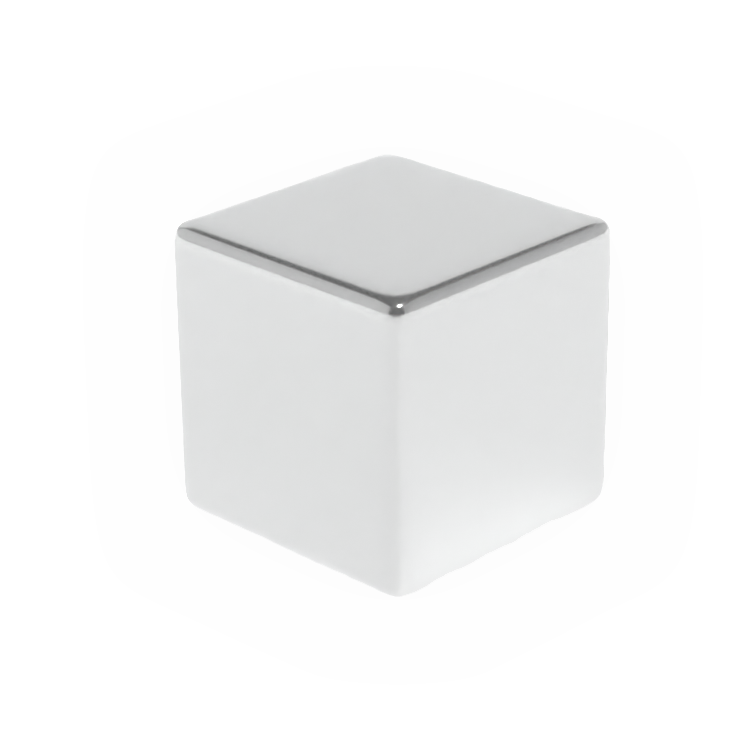

Nickel-Copper-Nickel (Ni-Cu-Ni) Coated Magnets
Ni-Cu-Ni is by far the most common and popular coating for neodymium magnets. This is because it’s cost effective and excellent at preventing corrosion from ambient air. They have a reflective silver appearance which gives them an elegant and high-quality appearance. Although Ni-Cu-Ni offers excellent resistance to corrosion, they are not recommended for outdoor use because prolonged exposure can penetrate the pores and corrode the magnet.
- Thickness: 10-25um
- Cost: Low
- Max Operating Temperature: Est 200°C
- Industries: Ni-Cu-Ni coated neodymium magnets are used in all industries, such as manufacturing, engineering, domestic, commercial, generators, automotive, oil and gas, air conditioning, education & research, construction, transport, mining, agriculture and green energy.
✔️ Pros: Excellent corrosion against ambient air (general atmosphere)
❌ Cons: Not ideal for use in outdoor, wet, salty or acidic environments.
Nickel-Copper-Nickel (Ni-Cu-Ni) Coated Magnets
Ni-Cu-Ni is by far the most common and popular coating for neodymium magnets. This is because it’s cost effective and excellent at preventing corrosion from ambient air. They have a reflective silver appearance which gives them an elegant and high-quality appearance. Although Ni-Cu-Ni offers excellent resistance to corrosion, they are not recommended for outdoor use because prolonged exposure can penetrate the pores and corrode the magnet.
- Thickness: 10-25um
- Cost: Low
- Max Operating Temperature: Est 200°C
- Industries: Ni-Cu-Ni coated neodymium magnets are used in all industries, such as manufacturing, engineering, domestic, commercial, generators, automotive, oil and gas, air conditioning, education & research, construction, transport, mining, agriculture and green energy.
✔️ Pros: Excellent corrosion against ambient air (general atmosphere)
❌ Cons: Not ideal for use in outdoor, wet, salty or acidic environments.
Epoxy Coated Magnets
Epoxy coated magnets offer one of the most superior coating methods. The epoxy coating can withstand an impressive 72 hours in salt spray tests which means they are perfect for harsh, wet and salty conditions. They also have a lot of advantages over other metal coatings as they provide excellent electrical insulation. Epoxy magnets cost slightly more than traditional Ni-Cu-Ni magnets but offer a superior level of protection.
- Thickness: 15-25um
- Cost: Medium
- Max Operating Temperature: Est 200°C
- Industries: Epoxy coated neodymium magnets are used in many industries, such as marine, manufacturing, engineering, consumer products, commercial, sensors and jewellery.
✔️ Pros: Excellent protection against humid, wet and salty environments
❌ Cons: Can crack under significant impacts
Epoxy Coated Magnets
Epoxy coated magnets offer one of the most superior coating methods. The epoxy coating can withstand an impressive 72 hours in salt spray tests which means they are perfect for harsh, wet and salty conditions. They also have a lot of advantages over other metal coatings as they provide excellent electrical insulation. Epoxy magnets cost slightly more than traditional Ni-Cu-Ni magnets but offer a superior level of protection.
- Thickness: 15-25um
- Cost: Medium
- Max Operating Temperature: Est 200°C
- Industries: Epoxy coated neodymium magnets are used in many industries, such as marine, manufacturing, engineering, consumer products, commercial, sensors and jewellery.
✔️ Pros: Excellent protection against humid, wet and salty environments
❌ Cons: Can crack under significant impacts
Teflon (PTFE) Coated Magnets
Teflon is a very durable synthetic resin that provides a smooth finish. PTFE has excellent resistance to many acids, chemicals and solvents which makes it an ideal option if the magnets may come into contact with them. Additionally, Teflon coatings help reduce friction and wear on surfaces, making them last longer in abrasive conditions. Lastly, the durability of this coating mustn’t be understated – they are the supreme coating option for harsh conditions.
- Thickness: 1.5-3um
- Cost: High
- Max Operating Temperature: Est 250°C
- Industries: Teflon (PTFE) coated neodymium magnets are used in many industries, such as marine, medical, manufacturing, engineering, oil and gas.
✔️ Pros: Offers the best protection against all elements; humidity, wet, salty and acidic environments / Superior protection against breakage
❌ Cons: Can slip due to smooth surface, mechanical hold may be required.
Teflon (PTFE) Coated Magnets
Teflon is a very durable synthetic resin that provides a smooth finish. PTFE has excellent resistance to many acids, chemicals and solvents which makes it an ideal option if the magnets may come into contact with them. Additionally, Teflon coatings help reduce friction and wear on surfaces, making them last longer in abrasive conditions. Lastly, the durability of this coating mustn’t be understated – they are the supreme coating option for harsh conditions.
- Thickness: 1.5-3um
- Cost: High
- Max Operating Temperature: Est 250°C
- Industries: Teflon (PTFE) coated neodymium magnets are used in many industries, such as marine, medical, manufacturing, engineering, oil and gas.
✔️ Pros: Offers the best protection against all elements; humidity, wet, salty and acidic environments / Superior protection against breakage
❌ Cons: Can slip due to smooth surface, mechanical hold may be required.
Zinc (Zn) Coated Magnets
When zinc is exposed to ambient air, it oxidises which provides a stronger protective barrier. Although it isn’t the best coating against corrosive environments, it is one of the most cost effective coatings available
- Thickness: 8-15um
- Cost: Low
- Max Operating Temperature: Est 120°C
- Industries: Zinc coated neodymium magnets are used in projects that require low cost solutions such as DIY, consumer goods and education.
✔️ Pros: Low Cost
❌ Cons: Corrodes if exposed to wet and humid environments over a prolonged period
Zinc (Zn) Coated Magnets
When zinc is exposed to ambient air, it oxidises which provides a stronger protective barrier. Although it isn’t the best coating against corrosive environments, it is one of the most cost effective coatings available
- Thickness: 8-15um
- Cost: Low
- Max Operating Temperature: Est 120°C
- Industries: Zinc coated neodymium magnets are used in projects that require low cost solutions such as DIY, consumer goods and education.
✔️ Pros: Low Cost
❌ Cons: Corrodes if exposed to wet and humid environments over a prolonged period
Zinc (Zn) Coated Magnets
When zinc is exposed to ambient air, it oxidises which provides a stronger protective barrier. Although it isn’t the best coating against corrosive environments, it is one of the most cost effective coatings available
- Thickness: 8-15um
- Cost: Low
- Max Operating Temperature: Est 120°C
- Industries: Zinc coated neodymium magnets are used in projects that require low cost solutions such as DIY, consumer goods and education.
✔️ Pros: Low Cost
❌ Cons: Corrodes if exposed to wet and humid environments over a prolonged period
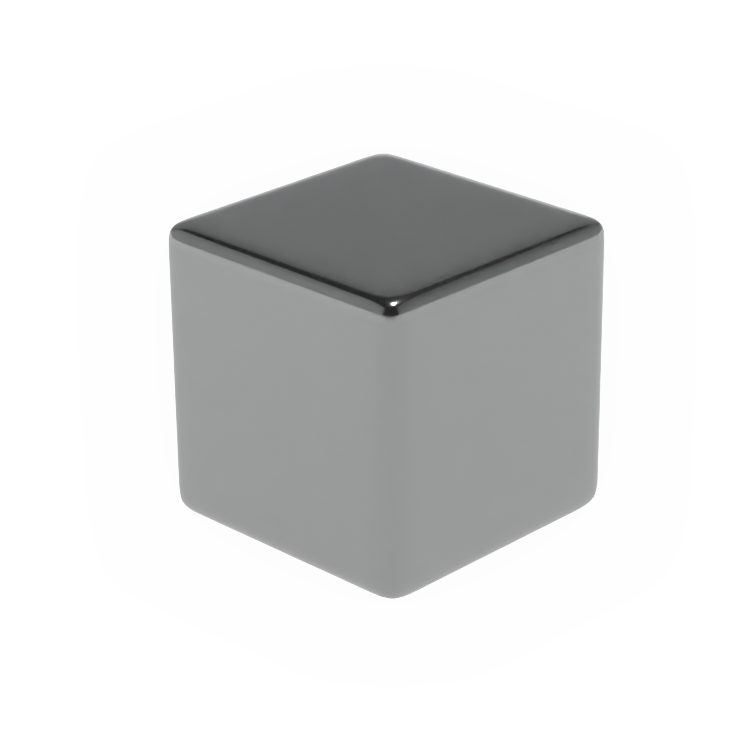
Black Nickel (Ni) Coated Magnets
Black nickel is very similar to Ni-Cu-Ni as it offers great resistance to ambient air and light resistance to chipping/breaking on impact. Black nickel maintains electrical conductivity with low reflectivity making it perfect for use in discreet and hidden applications. Additionally, black nickel coatings can provide a barrier against friction and heat, helping surfaces to last longer.
- Thickness: 12-30um
- Cost: Medium
- Max Operating Temperature: Est 200°C
- Industries: Black nickel coated neodymium magnets are used in industries such as manufacturing, automotive, pumps, hydraulics and jewellery.
✔️ Pros: Aesthetic / Low Reflectivity / Same protection properties as the most common coating Ni-Cu-Ni
❌ Cons: Increase cost / Increased lead times
Black Nickel (Ni) Coated Magnets
Black nickel is very similar to Ni-Cu-Ni as it offers great resistance to ambient air and light resistance to chipping/breaking on impact. Black nickel maintains electrical conductivity with low reflectivity making it perfect for use in discreet and hidden applications. Additionally, black nickel coatings can provide a barrier against friction and heat, helping surfaces to last longer.
- Thickness: 12-30um
- Cost: Medium
- Max Operating Temperature: Est 200°C
- Industries: Black nickel coated neodymium magnets are used in industries such as manufacturing, automotive, pumps, hydraulics and jewellery.
✔️ Pros: Aesthetic / Low Reflectivity / Same protection properties as the most common coating Ni-Cu-Ni
❌ Cons: Increase cost / Increased lead times
Titanium Nitrate (TiN) Coated Magnets
Titanium Nitrate (TiN) is a very durable coating that protects the magnet from harsh environments, chemicals and acids. This is a non-toxic material that is safe for the environment and holds a gold / yellow colour.
- Thickness: 2-6um
- Cost: Medium
- Max Operating Temperature: Est 500°C
- Industries: Medical, research, engineering
✔️ Pros: Extremely durable / Environmentally friendly / Offers protection against most hazardous environments
❌ Cons: Can increase lead times of custom-ordered magnets.
Titanium Nitrate (TiN) Coated Magnets
Titanium Nitrate (TiN) is a very durable coating that protects the magnet from harsh environments, chemicals and acids. This is a non-toxic material that is safe for the environment and holds a gold / yellow colour.
- Thickness: 2-6um
- Cost: Medium
- Max Operating Temperature: Est 500°C
- Industries: Medical, research, engineering
✔️ Pros: Extremely durable / Environmentally friendly / Offers protection against most hazardous environments
❌ Cons: Can increase lead times of custom-ordered magnets.
Gold (Au) Coated Magnets
Gold coating has an under coating of Ni-Cu-Ni and provides slight resistance from humidity and moisture. Gold plated magnets have a thin layer of gold which offers excellent oxidation resistance. This coating does not provide sufficient protection for wet, harsh or abrasive environments.
- Thickness: 20-25um
- Cost: High
- Max Operating Temperature: Est 1,000°C
- Industries: Medical, jewellery, research, decorative.
✔️ Pros: Premium aesthetic / The element (Au) has been approved for in-body and outer-body medical use
❌ Cons: Expensive coating method / Does not offer adequate protection in abrasive environments
Gold (Au) Coated Magnets
Gold coating has an under coating of Ni-Cu-Ni and provides slight resistance from humidity and moisture. Gold plated magnets have a thin layer of gold which offers excellent oxidation resistance. This coating does not provide sufficient protection for wet, harsh or abrasive environments.
- Thickness: 20-25um
- Cost: High
- Max Operating Temperature: Est 1,000°C
- Industries: Medical, jewellery, research, decorative.
✔️ Pros: Premium aesthetic / The element (Au) has been approved for in-body and outer-body medical use
❌ Cons: Expensive coating method / Does not offer adequate protection in abrasive environments
Copper (Cu) Coated Magnets
Copper coated magnets have an undercoating of nickel (Ni) are primarily used for decorative purposes rather than performance. This is because the material can rub off over time which means it is not ideal for harsh conditions.
- Thickness: 10-20um
- Cost: Low
- Max Operating Temperature: Est 200°C
- Industries: Jewellery and decorative.
✔️ Pros: A unique aesthetic that’s primarily used for decoration and jewellery
❌ Cons: Not suitable for harsh, wet environments or toxic.
Copper (Cu) Coated Magnets
Copper coated magnets have an undercoating of nickel (Ni) are primarily used for decorative purposes rather than performance. This is because the material can rub off over time which means it is not ideal for harsh conditions.
- Thickness: 10-20um
- Cost: Low
- Max Operating Temperature: Est 200°C
- Industries: Jewellery and decorative.
✔️ Pros: A unique aesthetic that’s primarily used for decoration and jewellery
❌ Cons: Not suitable for harsh, wet environments or toxic.

